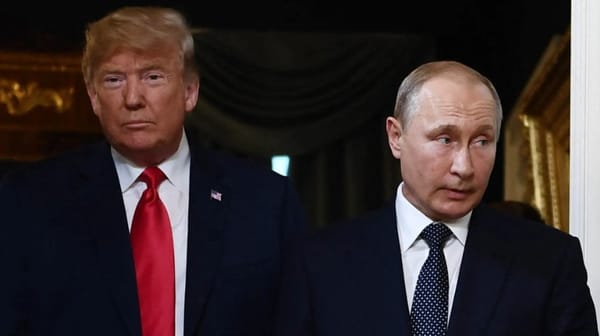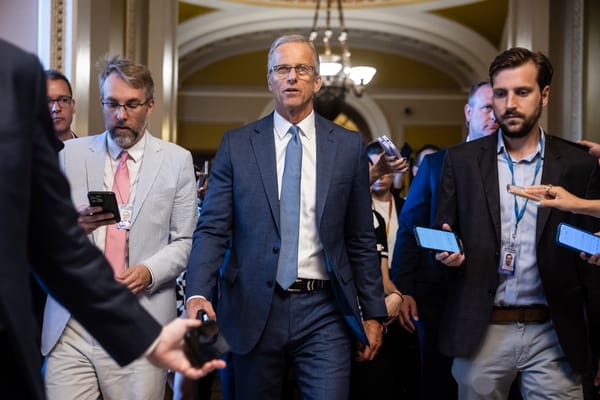Trump Administration Unveils Sweeping Executive Order on Health Care Costs

Introduction
On April 15, 2025, President Donald Trump signed a comprehensive executive order aimed at reducing health care costs for Americans, with a central focus on lowering prescription drug prices, increasing transparency in the pharmaceutical supply chain, and reforming Medicare payment structures[1][2][3]. The order builds on Trump’s previous initiatives and responds to persistent public concern over the high cost of health care and prescription drugs in the United States. While the order sets ambitious goals, many of its most significant provisions will require further regulatory action, collaboration with Congress, and engagement with industry stakeholders before they can take full effect[2:1][4].
Key Provisions of the Executive Order
1. Lowering Prescription Drug Prices
a. Medicare Drug Price Negotiation Program Reform
The order directs the Department of Health and Human Services (HHS) to improve and expand the Medicare Drug Price Negotiation Program, which was established under the Inflation Reduction Act (IRA) during the Biden administration[5][2:2][6]. Trump’s order seeks to:
- Increase transparency in the negotiation process.
- Prioritize the selection of high-cost drugs for negotiation.
- Minimize negative impacts on pharmaceutical innovation.
- Surpass the 22% savings achieved in the program’s first year[1:1][5:1][7].
The administration is also calling for a shift from gross to net drug prices under Medicare Part D, potentially allowing for deeper negotiated discounts[5:2].
b. Standardizing Medicare Payments for Prescription Drugs
The order instructs HHS to develop a plan to standardize Medicare payments for prescription drugs, particularly for expensive treatments like chemotherapy, regardless of where the patient receives care[1:2][4:1][6:1]. This “site-neutral” reform could lower prices by as much as 60% and address discrepancies that have historically favored hospital outpatient departments over independent clinics.
c. Expanding Access to Discounted Medications
- Insulin prices for low-income patients and the uninsured will be lowered to as little as $0.03 plus a small administrative fee.
- Injectable epinephrine for low-income patients and the uninsured will be available for as low as $15 plus a small administrative fee[1:3][7:1][3:1].
- The order revives a first-term Trump program requiring federally qualified health centers to pass on discounts for insulin and EpiPens to patients.
d. Facilitating Drug Importation
States will be able to expand or launch programs to import lower-cost prescription drugs from Canada and potentially other countries, building on existing pilot programs[1:4][7:2][3:2].
2. Increasing Transparency and Competition in Drug Markets
a. Pharmacy Benefit Manager (PBM) Reform
The order targets the role of pharmacy benefit managers, or PBMs—middlemen who negotiate drug prices on behalf of insurers and employers and have been criticized for lack of transparency and for contributing to rising drug costs[1:5][5:3][2:3][4:2].
- PBMs will be required to disclose fees paid to brokers for steering employers to their services.
- HHS and the Department of Labor will propose new regulations to increase transparency around PBM compensation and practices under the Employee Retirement Income Security Act (ERISA).
- The order calls for public listening sessions on anti-competitive behavior by PBMs and pharmaceutical manufacturers, in coordination with the Department of Justice, Department of Commerce, and Federal Trade Commission[5:4].
b. Accelerating Approval of Generics and Biosimilars
- The Food and Drug Administration (FDA) is directed to streamline the approval process for generic and biosimilar drugs, which are often 80% cheaper than brand-name alternatives[1:6][3:3].
- The order aims to increase the availability of these lower-cost options and encourage their use by physicians and patients.
c. Price Transparency for Patients
- The order mandates that hospitals and insurers disclose actual prices, not estimates, for services and prescription drugs, building on earlier Trump-era transparency rules[8].
- Enforcement policies will be updated to ensure compliance and to make prices comparable across providers.
3. Medicare and Medicaid Payment Reforms
a. Site-Neutral Payment Reform
HHS is tasked with evaluating whether Medicare payment policies are incentivizing a shift in drug administration volume toward costly hospital outpatient departments. The administration seeks to align payments for prescription drugs and certain outpatient services, regardless of the care setting[1:7][5:5][4:3].
b. 340B Drug Pricing Program Changes
The order mandates regulatory changes to the 340B program, which provides discounted drugs to hospitals serving low-income and uninsured patients. The administration contends that some hospitals benefit from these discounts without passing savings to patients, while hospital associations argue that the funds are reinvested into community services[5:6][4:4].
c. Medicaid Drug Rebates
The order seeks to ensure that drug manufacturers pay accurate Medicaid drug rebates, further reducing costs for state and federal health programs[5:7].
Implementation Challenges and Timeline
While the executive order sets a sweeping agenda, many of its provisions require additional rulemaking, stakeholder engagement, or even congressional action before they can be fully implemented[2:4][7:3][4:5]. For example:
- Changes to the Medicare Drug Price Negotiation Program will involve a public comment period and could take months or years to be reflected in lower prices for patients[5:8][6:2].
- Some reforms, such as site-neutral payment changes, have historically faced resistance from rural hospital advocates and may require legislative compromise[4:6].
- The pharmaceutical industry is expected to challenge certain measures, particularly those affecting profit margins or requiring greater transparency[7:4][3:4].
Potential Impact and Reactions
For Patients and Consumers
- Lower Out-of-Pocket Costs: If fully implemented, the order could deliver substantial savings for seniors and low-income patients, particularly for high-cost drugs like insulin and injectable epinephrine[1:8][7:5].
- Greater Price Transparency: Patients and employers will have better access to actual prices, allowing them to shop for care and medications more effectively[8:1].
- Expanded Access to Generics: Accelerated approval and wider use of generics and biosimilars could further drive down drug prices[1:9][3:5].
For Hospitals and Providers
- Payment Reforms: Site-neutral payment policies may reduce revenue for hospitals that rely on higher Medicare reimbursements for outpatient drug administration, particularly in rural areas[4:7].
- 340B Program Changes: Hospitals participating in the 340B program may face new requirements to pass on savings or justify how discounts are used[5:9].
For the Pharmaceutical Industry
- Pressure on Pricing: Drug manufacturers face increased pressure to lower prices, accept greater transparency, and compete with generics and imported alternatives[5:10][7:6][3:6].
- Innovation Concerns: The administration has pledged to minimize negative impacts on pharmaceutical innovation, but industry groups warn that aggressive price controls could stifle research and development[5:11][2:5][7:7].
For State Governments
- Drug Importation: States may benefit from expanded authority to import lower-cost drugs, potentially saving millions in Medicaid and public employee health plan costs[1:10][7:8][3:7].
- Medicaid Rebates: Tighter enforcement of Medicaid drug rebate rules could yield additional savings for state budgets[5:12].
Political and Policy Context
President Trump’s executive order is both a continuation of his first-term priorities and a direct response to the Inflation Reduction Act’s Medicare drug negotiation provisions, which the administration argues have produced lower-than-expected savings and increased administrative complexity[2:6][7:9][4:8]. The order also reflects a broader push to slash regulatory barriers and eliminate anti-competitive practices in the health care sector[5:13][8:2].
While the order was welcomed by some patient advocacy groups and conservative health policy experts, it drew criticism from parts of the pharmaceutical industry and hospital associations. Some Democrats and industry leaders argue that the order does not go far enough to address systemic issues in American health care, while others warn that certain provisions could inadvertently reduce access to care or stifle innovation[7:10][3:8].
Conclusion
President Trump’s sweeping executive order on health care costs marks a renewed effort to tackle one of the most persistent challenges facing American families: the high and often unpredictable cost of prescription drugs and medical services. By targeting drug prices, increasing transparency, and reforming Medicare payment structures, the administration aims to deliver tangible savings for patients and taxpayers while fostering a more competitive and accountable health care system.
However, the path to implementation is complex. Many provisions will require further regulatory action, public input, and, in some cases, legislative support. The pharmaceutical industry, hospitals, and patient advocates will all play critical roles in shaping the final outcome. As the administration moves forward, the ultimate test will be whether these ambitious reforms can translate into real, lasting relief for Americans struggling with the cost of health care[1:11][5:14][2:7][7:11][3:9][4:9][6:3].
https://www.whitehouse.gov/fact-sheets/2025/04/fact-sheet-president-donald-j-trump-announces-actions-to-lower-prescription-drug-prices/ ↩︎ ↩︎ ↩︎ ↩︎ ↩︎ ↩︎ ↩︎ ↩︎ ↩︎ ↩︎ ↩︎ ↩︎
https://www.ajmc.com/view/trump-signs-executive-order-to-lower-drug-prices ↩︎ ↩︎ ↩︎ ↩︎ ↩︎ ↩︎ ↩︎ ↩︎
https://www.axios.com/2025/04/15/trump-order-lower-drug-prices ↩︎ ↩︎ ↩︎ ↩︎ ↩︎ ↩︎ ↩︎ ↩︎ ↩︎ ↩︎
https://www.cnn.com/2025/04/15/politics/trump-orders-cost-cutting-across-drug-hospital-policies/index.html ↩︎ ↩︎ ↩︎ ↩︎ ↩︎ ↩︎ ↩︎ ↩︎ ↩︎ ↩︎
https://www.fiercehealthcare.com/payers/trump-order-seeks-changes-medicare-drug-price-negotiation-program-pbm-reform ↩︎ ↩︎ ↩︎ ↩︎ ↩︎ ↩︎ ↩︎ ↩︎ ↩︎ ↩︎ ↩︎ ↩︎ ↩︎ ↩︎ ↩︎
https://www.npr.org/sections/shots-health-news/2025/04/15/nx-s1-5366067/trump-medicare-lower-drug-prices ↩︎ ↩︎ ↩︎ ↩︎
https://www.nytimes.com/2025/04/15/health/trump-executive-order-prescription-drug-pricing.html ↩︎ ↩︎ ↩︎ ↩︎ ↩︎ ↩︎ ↩︎ ↩︎ ↩︎ ↩︎ ↩︎ ↩︎
https://www.whitehouse.gov/fact-sheets/2025/02/fact-sheet-president-donald-j-trump-announces-actions-to-make-healthcare-prices-transparent/ ↩︎ ↩︎ ↩︎




